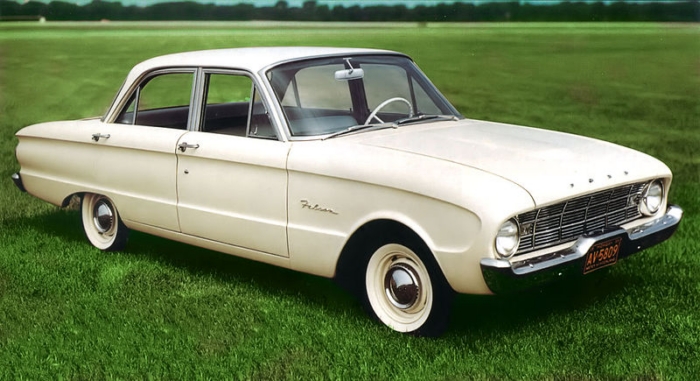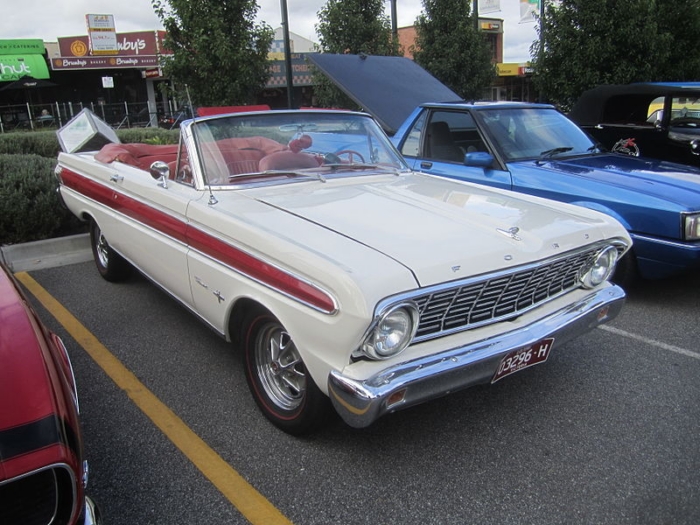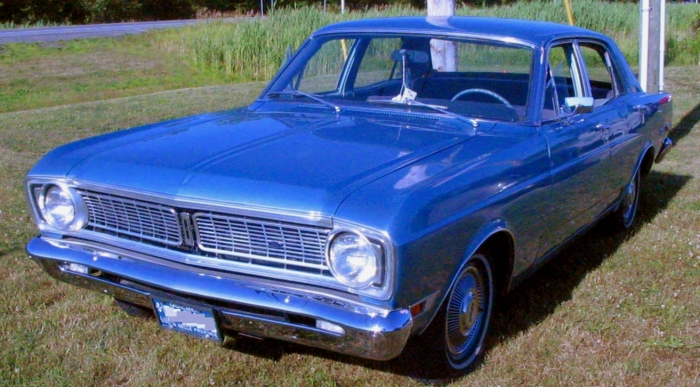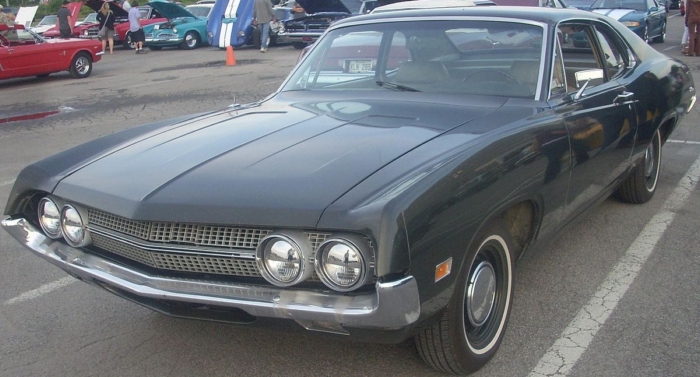When Ford first developed the Mustang, they were armed with a critical piece of information: The mid 1960's were about to witness the transformation of baby boomers to automobile consumers. Armed with this knowledge, they strived to create a car that would attract the attention of this younger generation. For…
Affordable Classic Cars – The Ford Falcon
It’s no secret that collecting classic cars is not cheap. Heck, just take a look at our selection of antique hubcaps or eBay page and you’ll quickly see that collecting classic cars is not exactly an affordable hobby. Many people end up avoiding the hobby altogether because they don’t think they have the cash available (not to mention permission from their significant other) for maintenance and repairs, let alone the initial price of purchasing a vintage automobile. That’s why we decided to start a series on affordable classic cars. If you’re looking to get into the hobby without breaking the bank, this is the series for you. We will be featuring a different classic car with each article, each with its own charming appeal and wallet-friendly price tag.
FORD FALCON
The Ford Falcon is a great starter car to begin your collection with. You can frequently find them in the $10-20k range, obviously depending on the model and condition. Of course, rare or excellent condition models can sell for much more than that to the right buyer.
Historically, the Ford Falcon was the result of shifting tastes and a growing demand for smaller vehicles. Volkswagen and Toyota had traditionally dominated this market as the Big Three (Ford, GM, Chrysler) had been concentrating on larger automobiles. Large cars were becoming increasingly expensive, and since many families now found themselves in the market for a second car, they had no need for it to be a large automobile. Market research also suggested that women thought that full size cars had become too large and preferred more compact cars. The American manufactures wanted in on the action.
The Falcon was Ford’s attempt to capture this market share and was produced from 1960 to 1970. It was offered in many varieties. Sedan and station wagon models were offered in both two and four-door varieties, and two-door hardtop and convertible. The Falcon was a very successful car for Ford, and variations were manufactured across the world, including Mexico, Canada, Chile, Argentina and Australia.
Don’t think that because you choose a Falcon, you’d be driving a car void of historical charisma. Initially fitted with a V8 260 cubic inch in 1963, and later upgraded to 289, the Falcon transformed from modest compact to up and coming sports car in the blink of an eye. Two door versions (hardtop and convertibles) began to come with bucket seats. Other option included a tachometer and a 4-speed manual floor shift. Ford Falcons were even entered into the Monte Carlo Rally, where they competed with and beat the best European competition. The muscly Falcon models would prove to be worthy competition in races in both America and England.
First Generation
The first version of the Falcon was made from 1960 – 1963 and was powered by a modest 90 horsepower engine. Consumers could choose between sedan, station wagon, and the Ranchero body styles. The Ranchero was a car-truck hybrid designed to compete with Chevrolet’s El Camino.
The man credited as the “father of the Falcon” is Robert McNamara. Unfortunately, McNamara would leave Ford to become U.S. Defense Secretary shortly after the release of the Falcon. Still, McNamara must have enjoyed the success of the Falcon from afar, as over half a million Falcons were driven off the lot in its first year on the market.
Throughout the next several years Ford began offering even more options and choices in an attempt to improve the mass appeal of the Falcon. Various aesthetic options such as faux wood trim on the sides would be among the many stylistic and performance options consumers had. Newer models like the Futura and sedan delivery models were added to the line as well.

1960 Ford Falcon
Second Generation
By 1963 Ford once again added two new models to the Falcon fleet. They began offering a 4-door version of the Futura and added the “Deluxe” wagon. Convertibles, hardtops, V8 engines; by this time the sky was the limit. 6-cylinder models featured 4 lugged 13″ steel OEM wheels, while the V8 model had 5 lug wheels. There was now a Falcon for everyone, and Ford had successfully established the Falcon as one of the most popular vehicles of the decade.
By the mid 60s, however, Ford pursued a more modern appearance for the Falcon to target a younger demographic. Falcons manufactured in this era (1964-1965) are considered second generation Falcons. The body was less round and resulted in a more “fun” looking car. A new model named the Sprint featured a 260 V8, sportier suspension and a booming exhaust. The Sprint model would never catch on, however, since most people interested in it ended up purchasing a Mustang instead which was priced just a little bit higher than the Falcon Sprint.

1964 Ford Falcon Convertible
Third Generation
In 1966, the Falcon was redesigned yet again. The body was styled much more like a Mustang than ever before. The third generation (1966-1970) Falcon was the first to feature heater and defroster as standard options. Ford dropped a few of the two door models as well. The Ranchero would also leave the Falcon line and become a type of Ford Fairlane.

1968 Ford Falcon Sedan
Unfortunately for Ford, by 1970 the Falcon had lost its appeal. Poor sales combined with stringent reform of safety legislation led to the Falcon’s demise. In 1970, Ford transformed the Falcon into a budget version of the Ford Fairlane. It was marketed as the “Falcon 70 1/2” and was available as a wagon or sedan. In retrospect, this was a sad demise for a car that had been so influential on the industry for more than a decade. There are many things for the collector to appreciate in the Ford Falcon: beautiful compact body styles, simple maintenance and the overall innovation behind the many versions. If you’re looking for a great classic car to start your collection, the Ford Falcon is an amazingly affordable option.

1970 1/2 Ford Falcon
Check back soon for part two of our affordable classic car series: The Studebaker Lark!







